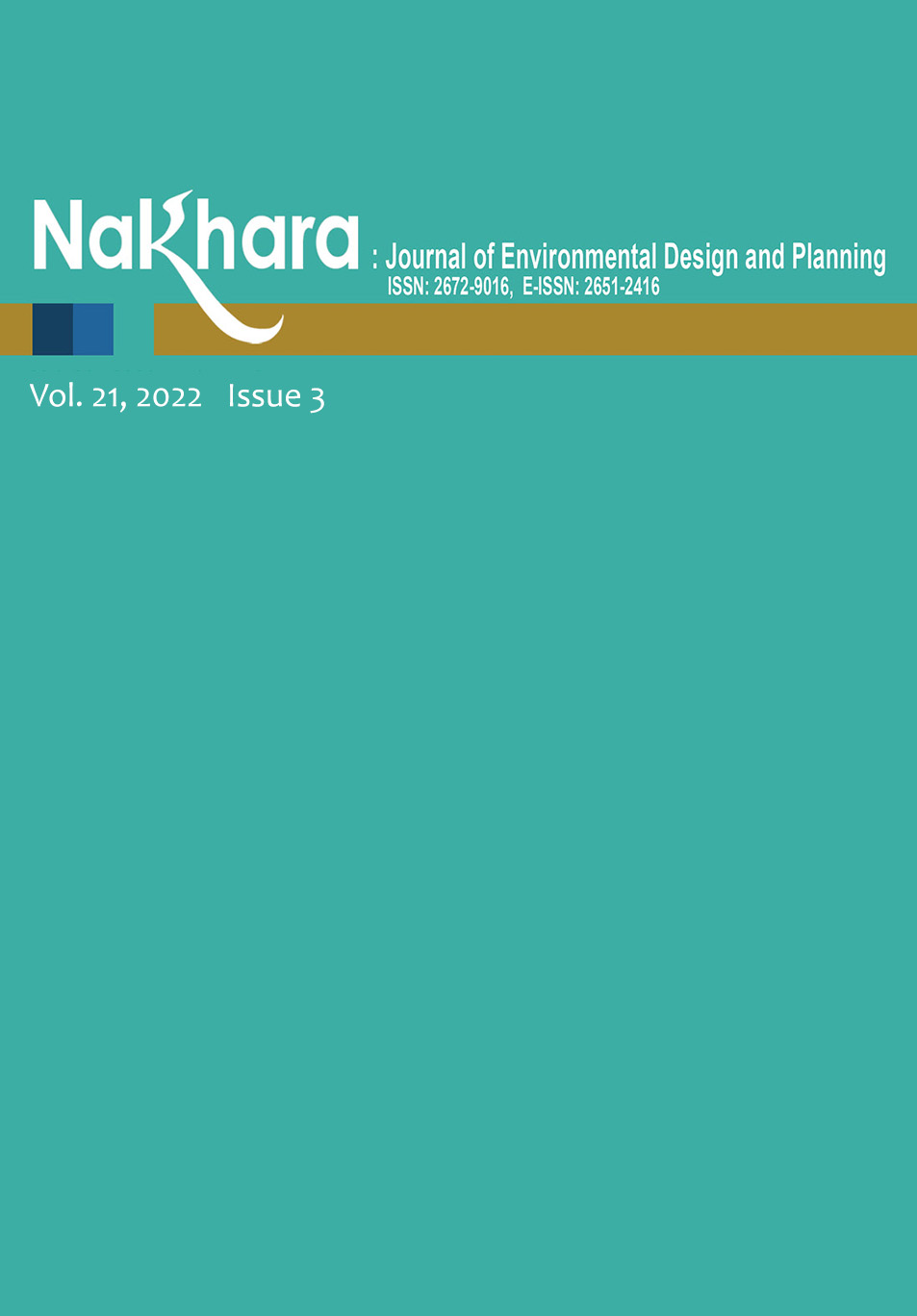Understanding the Dynamic Creative Clustering in the Phra Athit Road Area of Bangkok
Main Article Content
Abstract
This article examines changes along Phra Athit Road in Rattanakosin's historic center. With the support of the state, a former commercial street became a "cultural quarter" and eventually a "cultural-creative cluster," with creative activities infiltrating the neighborhoods. For this study, the researcher conducted a field survey and interviewed creative entrepreneurs in four sub-districts. The Phra Athit Road social and cultural resources reflect the qualities or potential resources of traditional neighbourhoods that have fostered the development of creative clusters. "Urban culture” is one of the district's key cultural resources that is properly understood and utilized, and its complex network of creative people is a crucial social resource. These creative people are “outsiders” with strong relationships to “insiders”; some of them advocate a new way of living, while others comprise groups of intellectuals with creative economy talents and tasks. Cultural-creative clusters comprise more than people; they are typified by cafés and bars, exhibition spaces, and the production of creative products. These clusters may vary from one another in function and location, and newer clusters, less dense than the original, are less harmful to traditional communities and businesses. What they have in common is that they have enabled participants to gain real-life experiences and join distinctive activities customized by entrepreneurs. Still, those who use external resources to create goods and develop a creative cluster may endanger the very neighbourhoods where they take root.
The Phra Athit Road area provides a deep understanding of "creative clustering," which refers to a dynamic process that has taken place in some traditional neighbourhoods, based on the positive exploitation of their rich traditional, artistic, and cultural resources. Entrepreneurs are producing unique products that fit into complex systems, which is good for the area, but may also disrupt established patterns in the community. Transforming the historic area gradually could help locals adjust to the change. This study proposes the following approaches to promote both the protection of traditional structures and the acceptance of change: (1) The design or planning of the area should allow for development that is consistent with the rhythm of life in the area. Proper pacing of changes and the growth of well-sized creative clusters create an ecosystem that is good for both the residents and creative entrepreneurs. (2) The neighbourhood’s values should be enhanced by integrating local and external resources. The wide range of creative production and consumption activities that are created from these resources will be unique and endlessly adaptable. (3) The adaptability of cultural-creative clusters should be optimized through programs provide good services and offer support to the urban regeneration. However, such programs and support should not limit the creativity and flexibility of these clusters.
Article Details

This work is licensed under a Creative Commons Attribution-NonCommercial-NoDerivatives 4.0 International License.
References
Askew, M. (1993). The Banglamphu district: A portrait of change in inner Bangkok [Paper presentation]. The 1993 Year-End Conference Who Gets What and How?: Challenges for the Future, Ambassador City Jomtien, Chonburi, Thailand.
Askew, M. (1996). The rise of moradok and the decline of the yarn: Heritage and cultural construction in urban Thailand. SOJOURN, 11(2), 183–210.
Bagwell, S. (2008). Creative clusters and city growth. Creative Industries Journal, 1(1), 31–46. https://www.tandfonline.com/doi/pdf/10.1386/cij.1.1.31_1?needAccess=true
Dick, B. (2015). Neighbourhood cultural mapping: Lessons lewrned from a pilot project in bayshore. Cultural and Local Governance, 5(1–2), 83–99.
Dovey, K. (2012). Informal urbanism as resilient assemblages. International Development Planning Review, 34(4), 349-369.
Evans, G. (2009). From cultural quarters to creative clusters–creative spaces in the new city economy. Institute of Urban History.
Issarathumnoon, W. (2009). Traditional urban community and its roles in heritage planning, A case of Bangkok heritage core. [Unpublished doctoral dissertation]. The University of Tokyo,
Issarathumnoon, W. (2020a). Applying the historic urban landscape approach to the identification of urban heritage attributes of Bangkok old town. Journal of Environmental Design and Planning, 19, 25-38. https://doi.org/10.54028/NJ2020192538
Issarathumnoon, W. (2020b). The transformation of ‘urban ordinaries’ into creative places: A case study of Bangkok’s alleyway neighbourhoods. In M. G.-F. H. Imai (Ed.), Asian Alleyways: An Urban Vernacular in Times of Globalization (pp. 115–138). Amsterdam University Press B.V.
Worasingsuk, J., Kulsirirorat, P., & Sudchaya, C. (2001). Kansuksa prawattisat khong thanonphra’athit [A study of history of Phra Athit Road]. Office of the National Culture Commission.
Mommaas, H. (2009). Spaces of culture and economy: Mapping the cultural-creative cluster landscape. In L. Kong, & O'Connor, J. (Eds.), Creative Economies, Creative Cities (Vol. The GeoJournal Library, pp. 45-59). Dordrecht: Springer.
Murzyn-Kupisz, M. (2012). Cultural quarters as a means of enhancing the creative capacity of Polish cities? Some evidence from Cracow. Quaestiones Geographicae, 31(4), 63-76.
O'Conner, R. (1983). A theory of indigenous southest Asian arbanism. Institute of Southest Asian Studies.
Rodwell, D. (2014). Heritage as a driver for creative cities, The Idea of Creative City (pp. 11-26). Krakow European Scientific Institute, ESI.
Peerapun, W., Sereerat, S., Sanit, P., & Vichienpradit, P. (2020). Master planning for conservation and developemnt of Krung Rattanakosin 2032. Nakhara: Journal of Environmental Design anf Planning 19, 39–58.
Zukin, S. (2012). The social production of urban cultural heritage: Identity and ecosystem on an Amsterdam shopping street. City, Culture and Society, 3, 281-291. https://www.sciencedirect.com/science/article/pii/S1877916612000525

